#projectdescription
Explore tagged Tumblr posts
Text
Poetry Studio Practice
The “Poetry Studio Practice” class took place on Mondays at the Basel Academy of Art & Design, Switzerland, in the fall-winter semester 2020, and was initiated by the Institute for Aesthetic Practice and Theory. 22 BA students from different institutes and curricula took part: Colin Barth, Brianna Deeprose-O’Connor, Laura Fonti, Hannah Furgal, Sophie Garnier, Isobel Groenke, Jonas Huldi, Maria Cristina Ionescu, Seraina Kick, Jael Ludewig-Kedmi, Nora Maritz, Lea Marong, Matilda Materni, Sinai Mutzner, Kiki Pavlovic, Jona Sciaroni, Fabienne Stucki, Jasmin Tanner, Thi Truong, Lola Willemin, Jérôme Zutter, and Sebastian Schachinger.
This is the class syllabus: “In this class, poetry and language-based works will be conceived as forms of fine arts studio practice and conceptual processes in their own right. We will work with writing and voice as materials for book art, performance, sound art, video, painting, multimedia installation, and also just textual poetry. The class will give hints and exercises to unfold the writing process in German, French, Italian, English, and possibly other languages, and will then focus on one-to-one and group meetings with the aim of producing language-based multimedia works. ‘Poetry’ will be defined as a broad field of emotionally challenging, formally free and conceptually surprising textual objects with a certain amount of features that will be clarified during the course, starting from a seminar-like introduction around the following claim: the term ‘poetry’ comes from the ancient Greek poiein – “to make”. Poetry is first of all a way of making. How can this influence our perspective on the visual arts as a whole? Through this question, we will rediscover the artistic practice as an active manifestation of nature, conversely to traditional views of art as opposed to nature or as a representation of nature, implied by the semantics of ‘art’ as ‘artificiality’ or ‘technique’.”
Alessandro De Francesco
1 note
·
View note
Text
Project Description
This project addresses the relation between a multilingual and trans-disciplinary approach to thinking, writing, and artistic practice by investigating how it is possible, or rather impossible, to translate a given written project into different forms and media. In a practice-based and multilingual environment typical of the spirit of the Bern University of the Arts, HKB, and of the Y-Institute for interdisciplinarity, the students are encouraged to think and write down their own projects in innovative and unconventional ways, and to look for equally innovative solutions in order to achieve their final multimedia output. At the same time, the written projects, even when unrealised – or unrealisable –, are themselves conceived and presented at the end as works of art or poetry in their own right. A particular attention is given to multidimensional ways of thinking poetry and multimedia practice in the arts, for instance through non-linear writing techniques within the page and their translation into immersive narratives and spaces through performance, installation, and conceptual processes.
1 note
·
View note
Text
What to do: Project Description 02
Learning & Discovery Centre:
To learn new things and discovery kids’ new potential.
Children age: 6 -12 years old
Open for public but need to register for courses and activities
Activity: Focus on hands-on workshop (art and crafts)
Client: KEMAS (Jabatan Kemajuan Masyarakat)
Users: “Kids + Kids” “Kids + Parents”

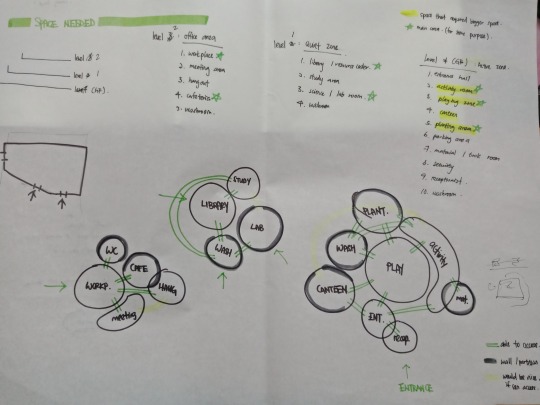
0 notes
Text
Fwd: Graduate position: ImperialCollege_London.StressFitnessConsequences
Begin forwarded message: > From: [email protected] > Subject: Graduate position: ImperialCollege_London.StressFitnessConsequences > Date: 3 January 2016 at 06:32:33 GMT > To: [email protected] > > > > PhDStudentship advertised at Imperial College London, Silwood Park > campus, UK > > On:Trans-generational fitness consequences of chronic stress induced by > global change > > Supervisors:Dr Julia Schroeder (Imperial College London) and Prof Terry > Burke (University of Sheffield) > > Applicationdeadline: 10 January 2016 > . > > Projectdescription: > Human-inducedglobal changes impose chronic environmental stress on ever > more natural populations. The physiological symptoms of chronic stress are > changes in hormone levels that can lead to stunted growth and increased > risk of infection. Furthermore, the physiological mechanisms invoked > by stressed are similar to those in ageing individuals. Recent studies > suggest that chronic stress can lead to faster senescence (measured in > telomere shortening rates), not only in affected individuals but also in > their offspring. What are the trans-generational fitness consequences of a > chronic stress response, and how is it adaptive? Stress could "prime" > offspring to enable them to endure stressful conditions in the future, by > a "life-fast die-young" trade-off. This projects tests the hypothesis > that chronic stress primes the next generation. To test this, we make > opportunistic use of an exceptionally well suited long-term "natural > experiment" in wild passerines and supplement statistical analyses on > existing long-term data with focused experiments on captive birds. > > Theaim of this study is to quantify the fitness consequences of chronic > stress to gain a better understanding of the long-term fitness costs > and benefits of chronic stress in a wild population the consequences for > population viability. The student will utilise a unique long-term study > of a wild passerine population. The precise direction and emphasis of the > project will be determined by collaboration between the student and the > supervisors. Nextto the traditional academic skills, the student will > also learn and improve key skills such as state-of-the-art statistical > modelling, data management, experimental design and field work. The > student can expect to receive exceptional training in state-of-the-art > analytical methodology, as well as benefitting from a well established > and rewarding field project. > > ImperialCollege London is a world leading university; it has been > Ranked 3rd in Europe and 8th in the world by the Time Higher Education > Rankings 2015-16. The student will be based at the Silwood Park campus > which has a large > graduate student community, with internationally renowned researchers. > > Thefunding for this post is covered by an SSCP DTP-NERC studentship, > and covers home fees and a stipend for 3.5 years. Applicants, > who must be residents of the EU OR have been กordinarily > residentข in the UK for 3 years prior to the start of the > studentship, must have an outstanding honours degree, a masters > degree, or equivalent, in a relevant subject, should complete an > online application, upload a supporting statement explaining why they > want to pursue this PhD (maximum 1 page), their CV, and 2 references, at: > https://ift.tt/3E1yGcT > Anyenquiries about the project should be directed to: > > DrJulia Schroeder [email protected] > > > [email protected] > via IFTTT
0 notes
Photo
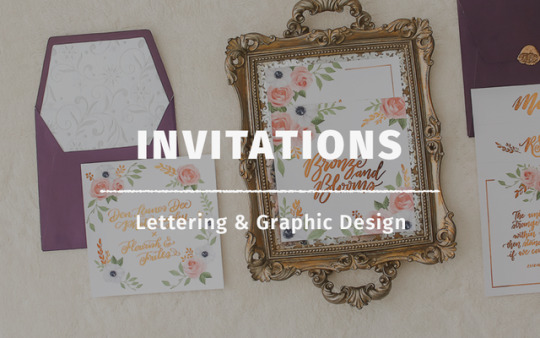
Invitations
Lettering & Graphic Design 2017
Last February 2017, I was an intern at Ink Scribbler under former Ink Scribbler artist Patty Py. I was given the opportunity to do the lettering while Patty traditionally painted the watercolor floral elements and assisted me with the digital layout for the invitation suite below.
Bronze and Blooms is a bridal editorial project by Den Llanos Dee with Flourish and Frills.
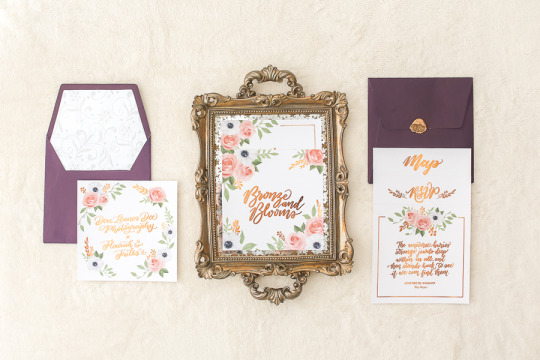
Photo credit: Den Llanos Dee. View the whole project here.
I have learned a lot during my internship at Ink Scribbler and because of this, I am able to confidently craft wedding & birthday invitation projects as I go along. Here are a couple of the wedding invitations I’ve created:
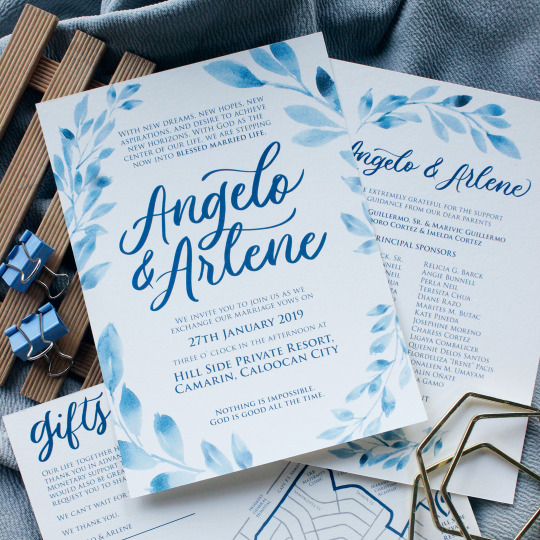
I also paint the watercolor florals myself, scan them and layout them digitally.
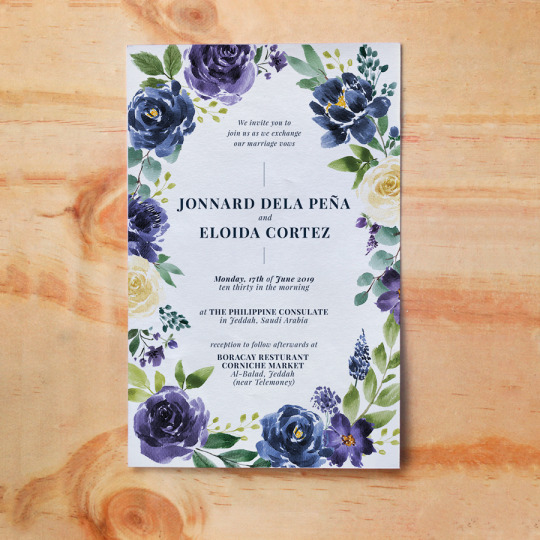
I enjoy making these as I get to practice painting and explore other styles that I wouldn’t be able discover if it weren’t for these kinds of projects!
Thanks for taking the time to drop by! :)
0 notes
Text
Project Role - Business Analyst (Temporary Assignment)
Project Role – Business Analyst (Temporary Assignment)
ProjectDescription: Ourclient is seeking a Business Analyst in Orlando, Florida – must be local orwilling to relocate on own expense. RequiredSkills: Need a strong Business Analyst with the following skills: Solid experience capturing for data mappings as Read the full post: : Project Role – Business Analyst (Temporary Assignment)
View On WordPress
0 notes
Text
July 2011: Find one geocache per day
Living in the South Bay, I feel like I have less of a connection to my environment and local surroundings than I ever have since moving to California. Marin has beautiful parks I hiked in every weekend; San Francisco has so many diverse neighborhoods and I was always Muni-ing/walking from one place to another; Berkeley is full of amazing food and is interesting, to say the least. The cities here seem all alike, are very suburban, and don't inspire exploration. Living in the South Bay doesn't feel like anything.
I love geocaching and hope that picking out interesting caches in the area will give the South Bay a sense of place, and also that I'll discover some unique spots along the way.
5 notes
·
View notes
Text
hablemosquechua project
Design a logo/mascot for @hablemosquechua, a twitter profile dedicated to teach quechua.
Client request: (specificly) come up with an andean themed little robot that can be used as the mascot/logo for the project.
twitter.com/hablemosquechua
Some style ref:
http://www.scribd.com/doc/36259976/Manual-de-iconografia-precolombina-y-su-analisis-morfologico
http://www.scribd.com/doc/53341564/Introduccion-Simiotica-Diseno-Andino-Precolombino
My thoughts so far: mochica-bird-warrior meets gundam SD meets Minecraft
2 notes
·
View notes
Text
Sensorial Sounds
Which non-verbal and verbal aspects (e.g. rhythm, pitch, tempo, dynamics and diction) of communication are not present in their (online) written transcription and how can they be translated into an interactive visual notation?
Why?
Nowadays the digital realm plays an important role in everyday life and our dependance on it is still growing. It should come as no surprise that it dominates the field of communication as well. This online form of communication makes social interaction easy and quick. Therefore the use of written language has increased significantly over the years as opposed to speech - whether on the phone or face to face. Unfortunately, this way of communication is not without drawbacks; a lot gets lost in translation from speech to text.
How?
First of all, the aspects of speech that are not represented in writing should be defined. Which non-verbal and verbal aspects of communication are not present in their (online) written transcription and how can they be translated into a visual notation that represents and includes those invisible aspects? Speech can be approached like having the same characteristics as music. It has various identical aspects, like rhythm, pitch, tempo, dynamics and diction. In fact, a visual notation system could be created for speech in the same way as musical notation is used for writing music; writing speech.
What?
What?
This visual notation should be presented in such a way that the use of it should be visible and clear. In the end it should at least include an explanation and application. It could be presented with the use of an interactive tool in which the notation can be observed, applied and used by the public.
0 notes
Text
Exercises
During the class we worked on three exercises/inputs I proposed to the students. Several remarkable results of these exercises are published here. Here are the three exercises as they have been proposed at the beginning of the class:
Exercise 1
“Vito Acconci’s exercise: write in exploded axonometry”.
When I invited the American artist Vito Acconci to my poetry class at the Ecole Normale Supérieure in Paris in 2009, he came up with several fantastic exercises, one of which was to try to write a text having in mind the model of the exploded axonometry, often used in design and architecture. The response to this input didn’t necessarily have to be visual, but also conceptual, narrative, towards a multidimensional perception of writing. Given its implications, I decided to re-propose this exercise to the Multilingualmediadimensional class.
Exercise 2
“Create a score/map as a piece and as a notational system for a piece to come, such as a performance, a sound work, an installation. How do the score or the map differ from the piece?”.
We discussed widely the poetic possibilities of nonconventional maps and notational systems, in terms of multilingualism (maps and scores as languages, as ways of translating actions and pieces), multimedia (maps and scores for multimedia projects to come), and multidimensionality (maps and scores as multiple narratives and ways of poetically and artistically reinventing space and performance).
Exercise 3
“Give words to the dancers in the following sequence from Sascha Waltz’s choreography NoBody: http://www.ubu.com/dance/waltz_nobody.html, minutes 29′ to 33′. Make a poem out of their movements. What would the dancers say? Would they all speak simultaneously, or one after the other? Would they join their voices in just one message, or would they say different things? How could this collective poem add something to the space of choreography and to the dancers’ movements, but also to the film of the performance rather than just the performance itself?”.
This exercise was also a way of exploring forms of translation among poetry, performance, space, multiplicity, collectivity, multidimensionality, voice, movement, body, perception, and so on and so forth, in the spirit of our class.
Alessandro De Francesco
0 notes
Text
What to do: Project Description 01
“ Education is the key to unlock the world, a passport to freedom ” --- Oprah Winfrey
We know that education is important for the nations especially the youth. But what actually makes our education worth with what we had spent? And what actually the kids nowadays should know and learn?
To encourage the kids to explore and understand more, I plan to have a learning centre that focus on art and crafts making (more like diy stuffs and hands-on work). Kids need to explore more to different things such as materials, tools and the most important is to think by themselves. Giving them a question or theme, provide them tools and materials, and let them think and done by themselves.
Art and crafts not only about design beautiful and pretty stuffs, it also involve different kind of knowledge such as science, maths and many others. They will be able to find out a solution by themselves and through hands-on works.


0 notes
Text
SCRIPTIC POETRY
A project about a form of poetry influenced by technological developments. In a way it derives from the earlier form of visual or concrete poetry, a form of design mostly applied in the 90s. Nowadays, in this period of time in which digital technologies and programming play a more and more significant role in our society, it raises the question how these developments have their influences and impact on this form of visual poetry. What would a new contemporary form of visual poetry in today's society look like? As there has been a lot of expermenting inside the format of visual poems, how can its concept be twisted or slightly adapted to create a new approach to this dated form of design?
Recycling and adapting principles used in scripting languages such as HTML, CSS and JAVASCRIPT a new format or template for poetry can be created. This template carries its own rules in language as well as in patterns and structures of poetry. It opens up a new dimension of looping and continuity. Interesting is the balance between the poem and its visual representation.
As scripting language is a way of programming to achieve some visual effects, what would the visualisation of such a 'scriptic poem' be? What would be the additional visual impact of a 'scriptic poem'? Could it have two different representations, a language-based and a programming-based representation? It could even be taken one step further: how would this visual poem be represented in sound and/or speech?
0 notes
Text
Graduate position: TU_Munich.2.PlantBreeding
The chair of plant breeding at the Technical University of Munich / TUM School of Life Sciences Weihenstephan invites applications for a PhD position TV-L E13 (65%), starting as soon as a suitable candidate is found. Research in the plant breeding group is focused on the development of molecular and statistical tools for plant breeding as well as on genome analysis in crop plants. Projectdescription: "FullThrottle"is a collaborative project combining physiology, biochemistry, molecular biology and genetics to investigate the factors affecting the rate and efficiency of C4 photosynthesis. Maize introgression lines will be used to identify and characterize QTL for photosynthesis-related traits and to investigate their relation to drought stress tolerance. Detailed analysis will focus on physiological parameters and transcript profiling in well-watered and drought stress conditions. The results will be integrated with those obtained by other partners in the project to provide a comprehensive analysis of photosynthesis efficiency in maize. We are looking for a highly capable and motivated candidate to take on a challenging but potentially very rewarding research subject. Thesuccessful applicant is expected to have: * Diploma or Master’s degree in biology, molecular biotechnology, plant physiology or related disciplines (above average grades) * Background in genetics, molecular biology and biochemistry is advantageous * Interest in photosynthesis and plant stress physiology * Willingness to carry out both field and laboratory work * Very good English (oral and written), German is an advantage * Ability to work in a team and to collaborate with other research groups Weoffer: * An interdisciplinary working environment in a team of molecular and statistical geneticists * Active exchange and collaboration with partners from academia and industry in a field of constant technical and methodological development * Advanced education in molecular genetics, bioinformatics and plant breeding in courses and summer schools * Employment contract with the German public service salary TV-L E13 (65%), for three years TheTechnical University of Munich is committed to increasing the proportion of women in research and education and thus explicitly invites qualified female scientists to apply for this position. Preference will be given to disabled candidates with essentially the same qualifications. Contact: Applicationswith the usual supporting information (letter of motivation, CV, certificates, transcripts, credentials, etc. in a single pdf file) should be submitted by Email to [email protected], subject matter: “PhD Position on Maximizing Photosynthetic Efficiency in Maize 17.2”. Application will be open until the position is filled. Formore information please see: http://bit.ly/2eQWZPN For questions related to the position and further background information please contact Dr. Claudiu Niculaes, Plant Breeding, TUM, [email protected]. -- via Gmail
0 notes
Text
PhD position in Quantum photonics
PhD position in Quantum photonics
ProjectdescriptionQuantum optics is going to play a large role in futurecomputing, sensing, and secure communication. However, many demonstrations arelaboratory-based, limiting the real-world applications and impact. Ourobjective is to realize a generic photonic integration platform (“opticalchips”) for quantum optics, based on mature, foundry-based processes. Customsingle-photon sources will be…
View On WordPress
0 notes
Text
Project Description
For project 1, I have investigated the space of The National War Memorial on Buckle Street. The building and its surroundings is a space where people visit to commemorate those who lost their lives in the war and in particular the Unknown Soldier. Unfortunately due to the main road in front as well as the position of the surrounding trees the ‘space’ is often unintentionally passed by without consideration. Due to significance of the lives lost and the visual reminder the building creates, a sense of monumentality has been expressed through the photographs. They have been arranged in a series to create a narrative of a person moving from the initial sighting to the final resting place of the Unknown Soldier.
Critique of photographs:
I think that my final series of images were particularly successful in exploring the sense of monumentality of the National War memorial. Through the refinement of the colour, light and perspectives I was able to create moments of reflection and importance of the built form. Developing the narrative of the photographs was also effective in creating a cohesive series. Initially I struggled to get my ideas across and I found that through the process of iterations the quality of the composition has improved dramatically. All of my final photographs were taken as the evening drew, which provided challenges. Overall, I feel that I have refined my technique to create a series of interesting and striking photographs.
0 notes
Text
August 2011: Tessellations!
I recently re-discovered an amazing book: Designing Tessellations by Jinny Beyer. I think it's out of print, and I was lucky to find a copy on Etsy.
My goal for this month is to design a tessellation a day. I love geometric designs and am fascinated with repeated needlepoint stitches and repetitive patterns I see around. I began doing some tessellation design accidentally when I went through a phase of cross stitching my name in binary. The abstract design really lent itself to experimentation and I realized I could create larger patterns by rotating and offsetting the "tile" of my name. I like the idea too of taking something meaningful (my name) obscuring it and making it abstract (translating it into binary) and then creating meaning and order again by finding a design.
I hope to work my way through the book, formally learning about the different types of symmetry, and then apply that to my own designs. At the end, if I have a design I really like, I want to have it printed on Spoonflower and create something from it for my new apartment... curtains? pillow? a quilt?
[Since I'm in the process of moving and unpacking the first week or two of August, it may take me a bit to set up my scanner and start posting pictures. Expect a mass posting hopefully within the next week!]
0 notes